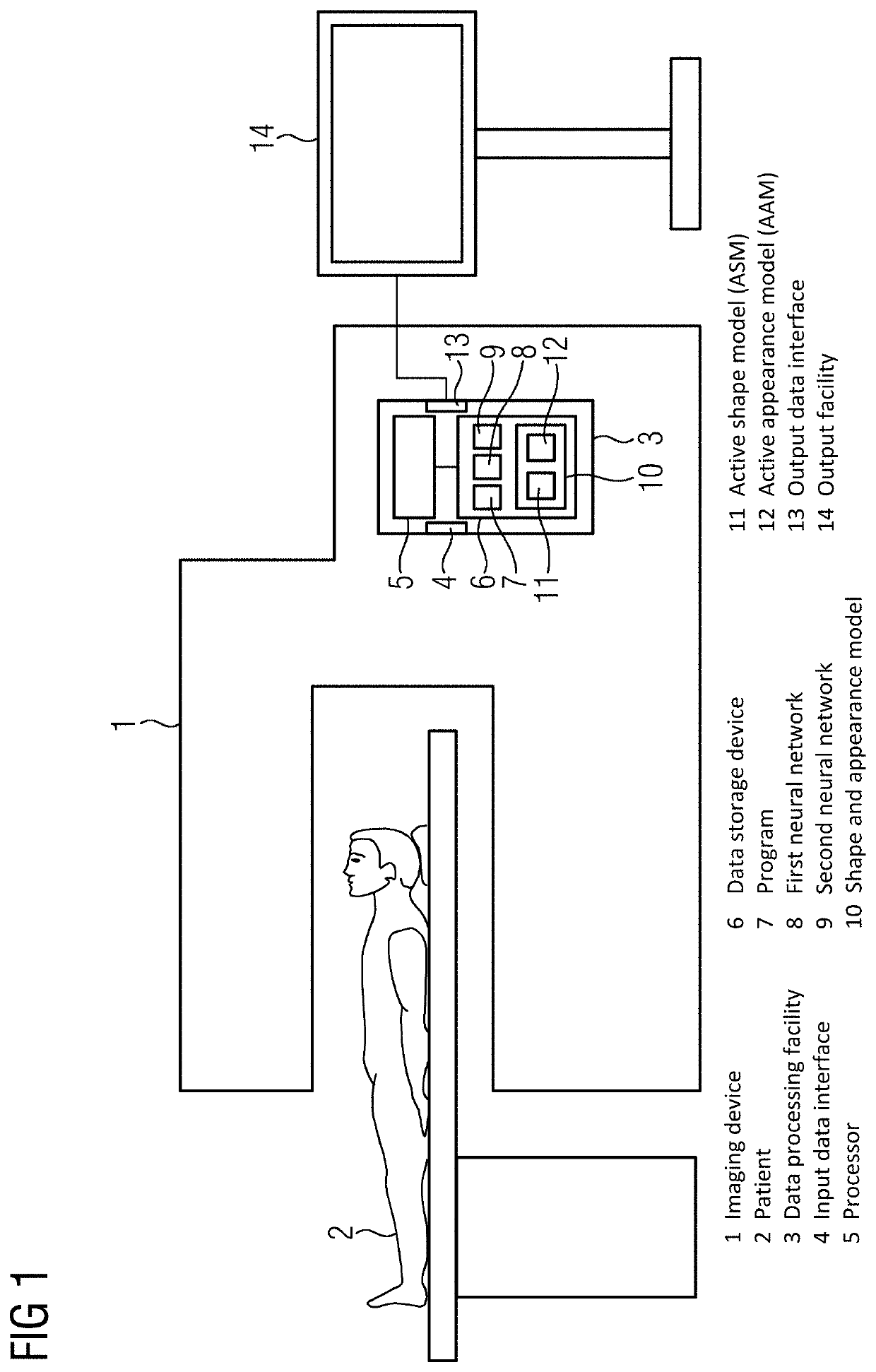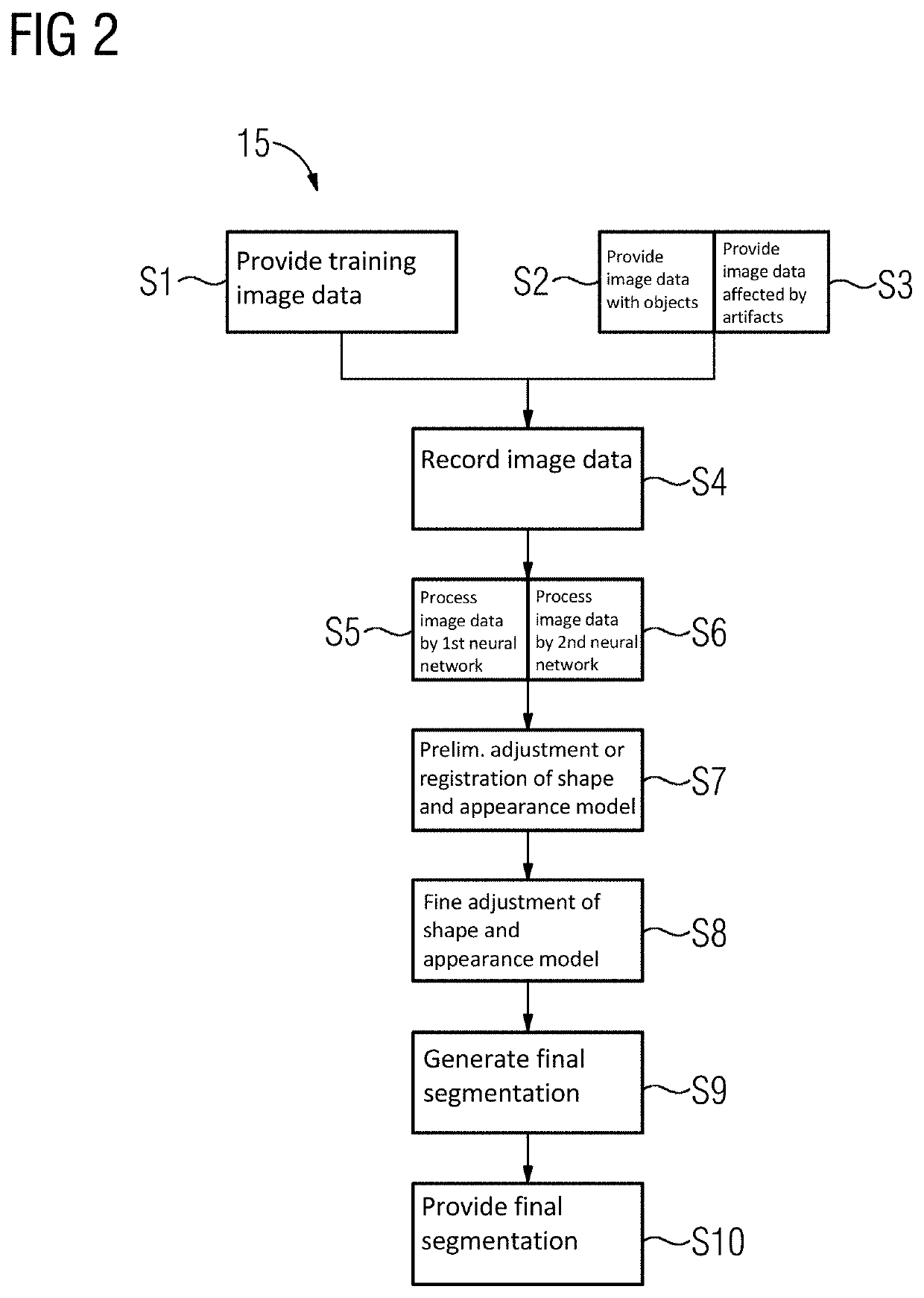Method and image processing apparatus for the segmentation of image data and computer program product
a technology of image data and computer program product, applied in image enhancement, instruments, medical/anatomical pattern recognition, etc., can solve the problems of unsatisfactory accuracy or reliability, and achieve the effect of reliable and robust determination of interference regions, convenient production, and convenient us
- Summary
- Abstract
- Description
- Claims
- Application Information
AI Technical Summary
Benefits of technology
Problems solved by technology
Method used
Image
Examples
Embodiment Construction
[0049]In the exemplary embodiments, the described components of the embodiments each represent individual features of the disclosure, which are to be considered independently of one another and in each case also develop the disclosure independently of one another. For this reason, the disclosure is also intended to include other combinations of the features of the embodiments than those shown. In addition, further features of the disclosure that have already been described may also be added to the described embodiments.
[0050]FIG. 1 depicts a schematic representation of an imaging device 1. For example, the imaging device 1 may be a computed tomography unit or a magnetic resonance system or the like, which in any case serves to record or capture image data of a patient 2. In this image data, a predefined target object, (e.g., a bone or a predefined tissue region of the patient 2), may be mapped in this context. In the present example, the imaging device 1 includes a data processing f...
PUM
 Login to View More
Login to View More Abstract
Description
Claims
Application Information
 Login to View More
Login to View More - R&D
- Intellectual Property
- Life Sciences
- Materials
- Tech Scout
- Unparalleled Data Quality
- Higher Quality Content
- 60% Fewer Hallucinations
Browse by: Latest US Patents, China's latest patents, Technical Efficacy Thesaurus, Application Domain, Technology Topic, Popular Technical Reports.
© 2025 PatSnap. All rights reserved.Legal|Privacy policy|Modern Slavery Act Transparency Statement|Sitemap|About US| Contact US: help@patsnap.com


